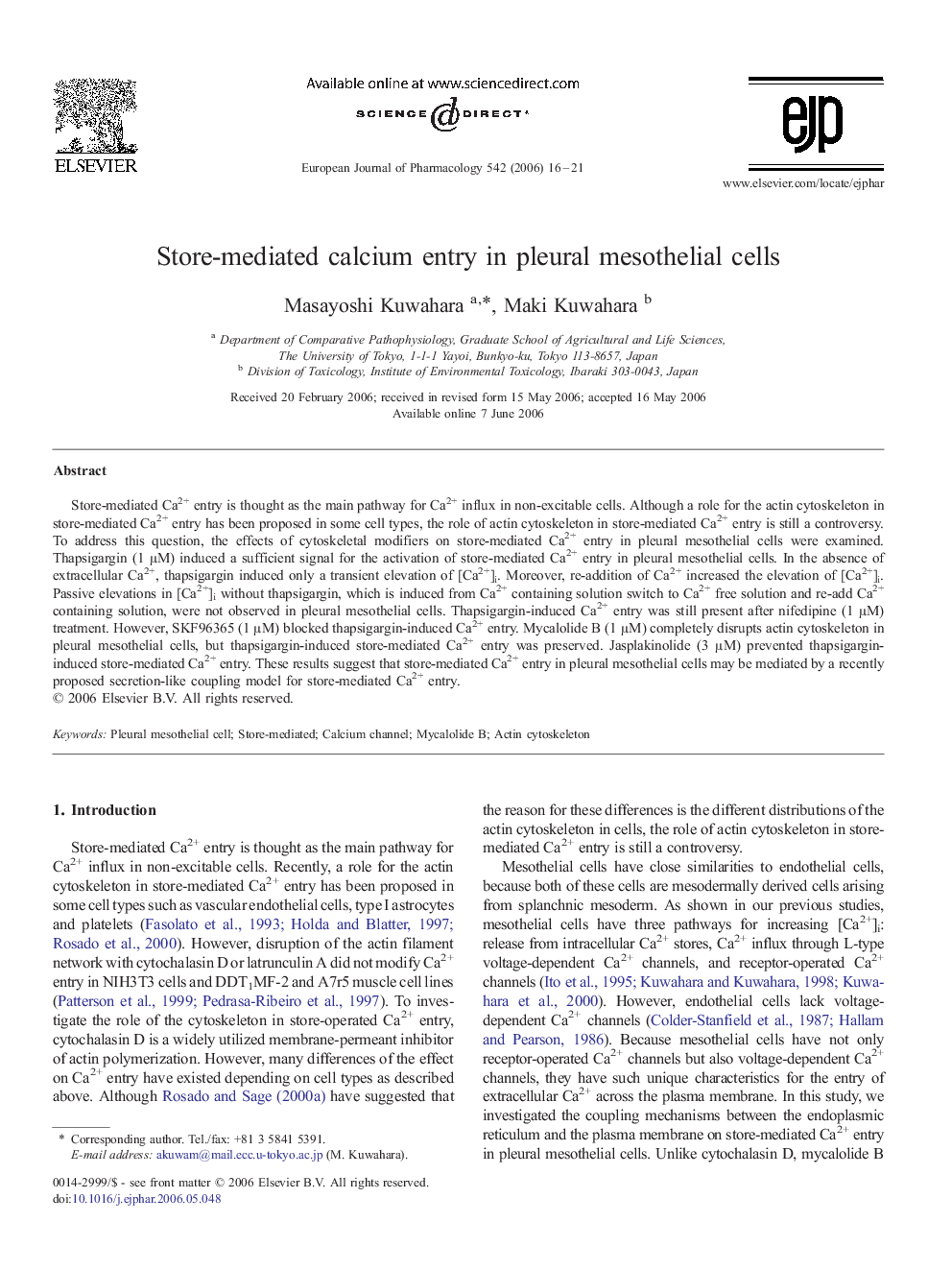| Article ID | Journal | Published Year | Pages | File Type |
|---|---|---|---|---|
| 2537029 | European Journal of Pharmacology | 2006 | 6 Pages |
Store-mediated Ca2+ entry is thought as the main pathway for Ca2+ influx in non-excitable cells. Although a role for the actin cytoskeleton in store-mediated Ca2+ entry has been proposed in some cell types, the role of actin cytoskeleton in store-mediated Ca2+ entry is still a controversy. To address this question, the effects of cytoskeletal modifiers on store-mediated Ca2+ entry in pleural mesothelial cells were examined. Thapsigargin (1 μM) induced a sufficient signal for the activation of store-mediated Ca2+ entry in pleural mesothelial cells. In the absence of extracellular Ca2+, thapsigargin induced only a transient elevation of [Ca2+]i. Moreover, re-addition of Ca2+ increased the elevation of [Ca2+]i. Passive elevations in [Ca2+]i without thapsigargin, which is induced from Ca2+ containing solution switch to Ca2+ free solution and re-add Ca2+ containing solution, were not observed in pleural mesothelial cells. Thapsigargin-induced Ca2+ entry was still present after nifedipine (1 μM) treatment. However, SKF96365 (1 μM) blocked thapsigargin-induced Ca2+ entry. Mycalolide B (1 μM) completely disrupts actin cytoskeleton in pleural mesothelial cells, but thapsigargin-induced store-mediated Ca2+ entry was preserved. Jasplakinolide (3 μM) prevented thapsigargin-induced store-mediated Ca2+ entry. These results suggest that store-mediated Ca2+ entry in pleural mesothelial cells may be mediated by a recently proposed secretion-like coupling model for store-mediated Ca2+ entry.
